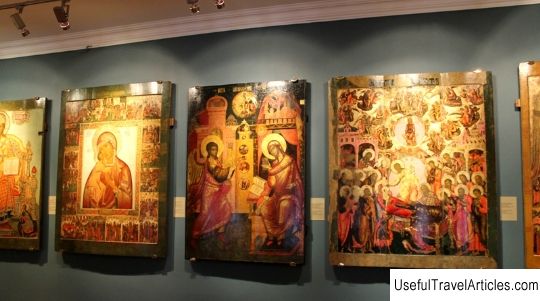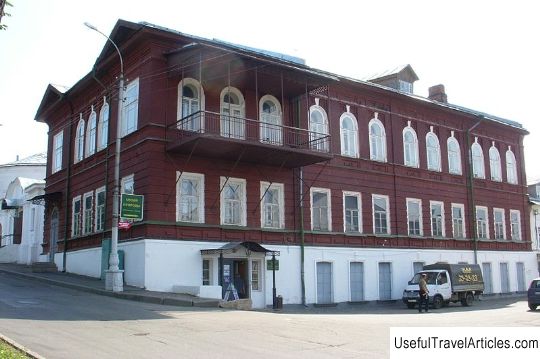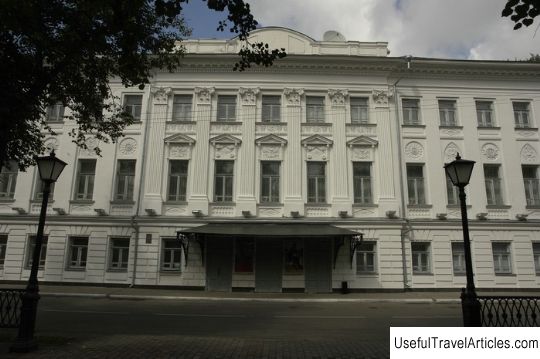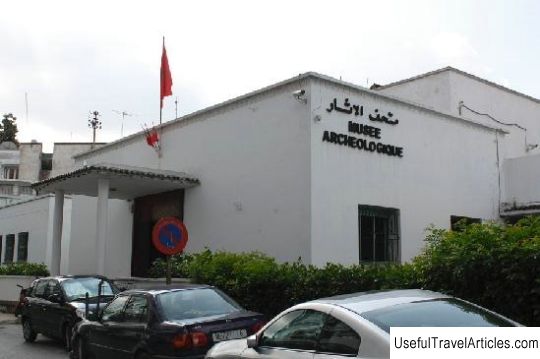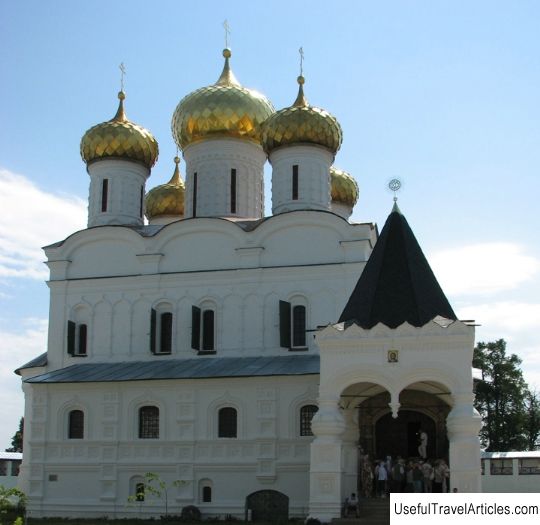Romanov Museum description and photos - Russia - Golden Ring: Kostroma
Rating: 7,7/10 (940 votes) 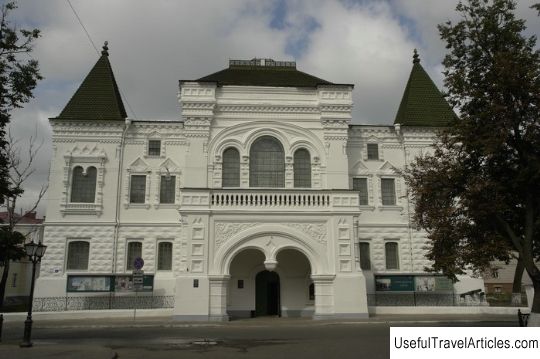
Romanov Museum description and photos - Russia - Golden Ring: Kostroma. Detailed information about the attraction. Description, photos and a map showing the nearest significant objects. Photo and descriptionThe Romanov Museum is located in the city of Kostroma. Its opening in 1913 was timed to coincide with the celebration of the 300th anniversary of the Romanov dynasty. The Romanov Museum was created on the basis of the "collection of antiquities", which was collected by the Provincial Archival Commission of Kostroma. Under the direction of the historian N.N. The Selifontova Archive Commission was engaged in the collection, research, description, publication of various historical written sources. It was located in the building of the Noble Assembly, occupying several rooms there. Therefore, it was here on the ground floor in 1891 that the Museum of Antiquities was opened, which was the first museum institution in the Kostroma province. After a while, the question of building a separate building for the needs of the museum was raised. For its construction, the Kostroma nobility donated a small plot of land, next to the Noble Assembly. Before the start of construction, two projects of the museum building were carried out: one - by the city architect N.I. Gorlitsyn, the second - by the provincial engineer L. Trebert. Work began only in 1904, when, as part of the celebrations in honor of the 300th anniversary of the Romanov dynasty, it was decided to create the Romanov Museum, the collections of which were to be associated with historical milestones in the life of the Romanov family. The project, developed by Gorlitsyn, was agreed with the emperor and assumed the construction of a building "in the style of ancient Russian towers." Funds for the construction of the building were partly government-owned, partly charitable. The largest contribution was made by the Krasnoyarsk industrialist G.V. Yudin (his family came from the Kostroma region). The building of the museum was founded during the archaeological congress in Kostroma in July 1909. Construction continued until 1911. In 1913, the interior decoration of the building was completed. On May 19, 1913, the museum was inaugurated in the presence of the imperial family and other famous guests, it was one of the main events in the framework of the festivities. The museum included a collection of valuable antiques. The lower floor housed the library and archives of the Kostroma archival commission; on the middle floor there is an ethnographic department, which presents collections of Kostroma peasant costumes, household items, household utensils. Also were collected items of landlord antiquity: luxury items, paintings, furniture, dishes. On the top floor there was a large hall with showcases, which contained the ancient acts of the House of Romanov. On the walls of the hall, the whole family of Romanovs was represented in portraits. On the right side of the floor there was a numismatic department, represented by a rich collection of coins from Sakharov, and a church-archaeological department, which includes a collection of ancient liturgical items and icons. The attraction of the Romanov Museum was a rare collection of engraved portraits of Russian figures over the past 300 years. After the revolution, the museum was transferred to a scientific society engaged in the study of the Kostroma region. This society, created in 1912, had its own geophysical, biological and ethnological stations, as well as a geological laboratory. After the war, an art gallery was opened in the museum building, and in November 1966 the building was transferred to the Kostroma Museum of Fine Arts. The building of the Romanov Museum has two floors. This is an elongated rectangular volume, facing the street with a complex facade, and framed by turrets on the sides. On the central transverse axis there is an elevated massive risalit on the main facade and a narrow one from the courtyard. The protruding porch is decorated with two-part arches and forms the base of the balcony. The layout of the building on all floors has a symmetrical composition. The internal interior fully corresponds to the purpose of the museum as a building: a wide front staircase and a spacious lobby, two pairs of spacious rectangular halls with large windows. The interior still retains interestingly executed doors that imitate ancient Russian canvases. In 2005, the museum was included in the historical and architectural museum-reserve of Kostroma. Today, the collection of paintings by B.M. Kustodieva and E.V. Chestnyakov. The Kostroma Museum is the only owner of Chestnyakov's works. Here in 1975 the opening of his work to the world took place after major restoration and research work carried out under the leadership of S.V. Yamshchikov and V.Ya. Ignatiev. The museum has a permanent exhibition dedicated to the events of the Time of Troubles and the fate of the Romanovs and Godunovs. Exhibitions of contemporary artists are held here every month.       We also recommend reading Saint Sophia Cathedral description and photo - Ukraine: Kiev Topic: Romanov Museum description and photos - Russia - Golden Ring: Kostroma. |
